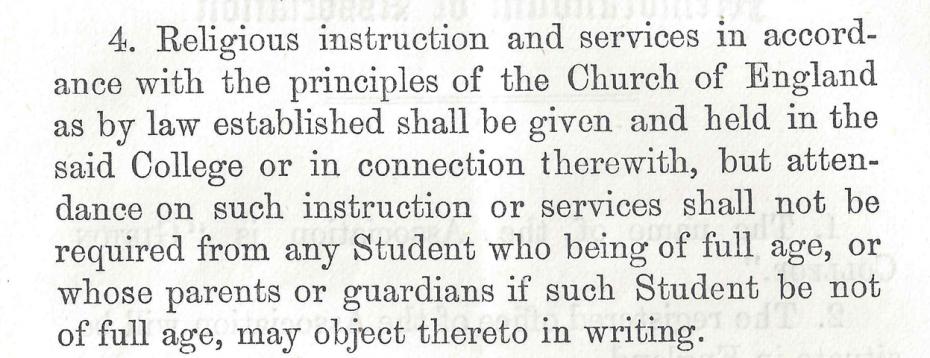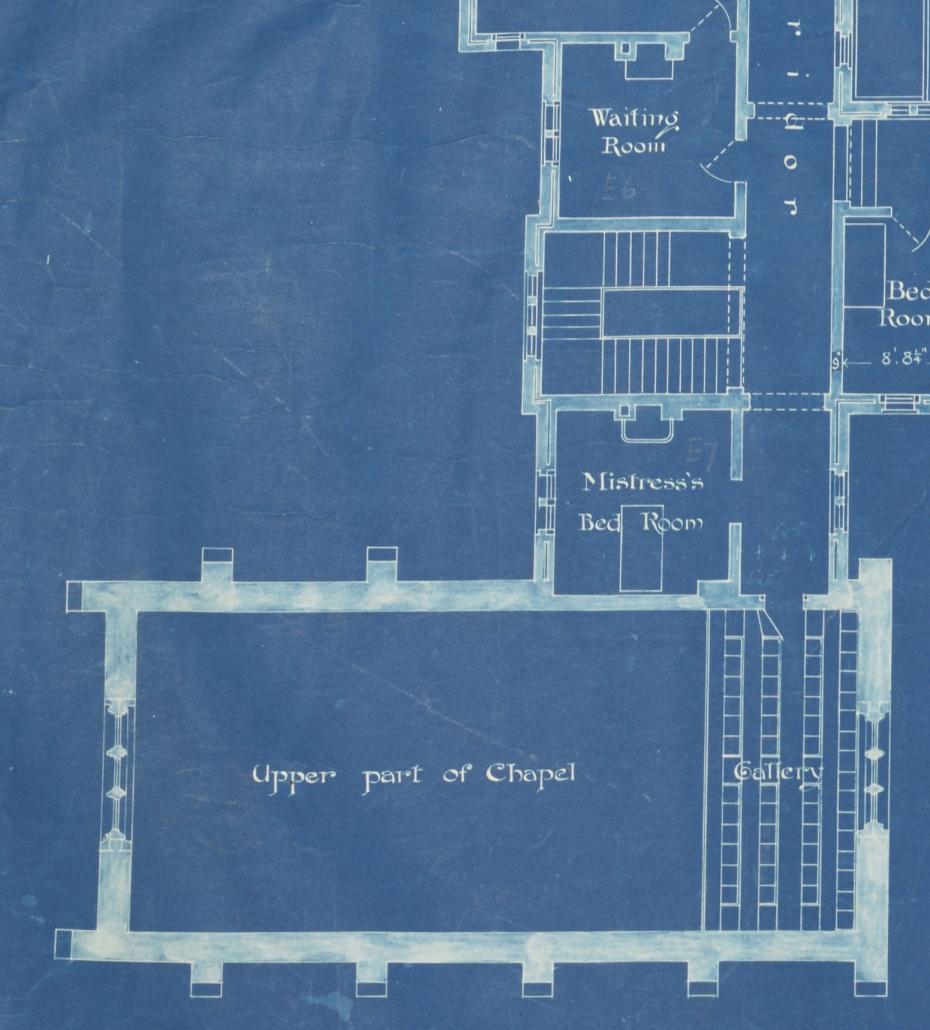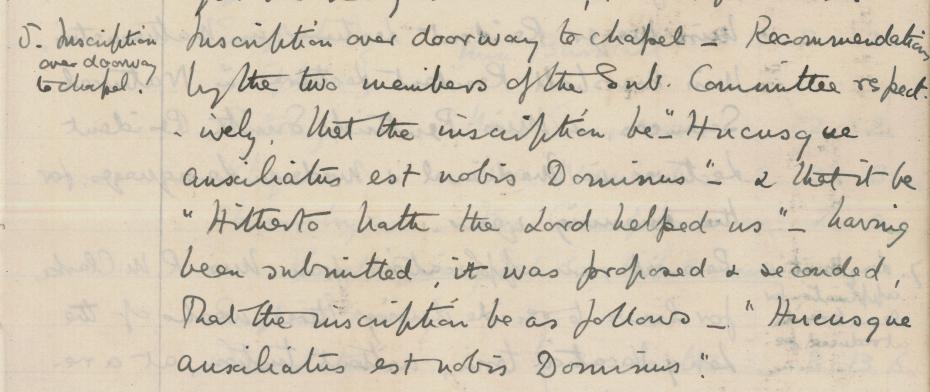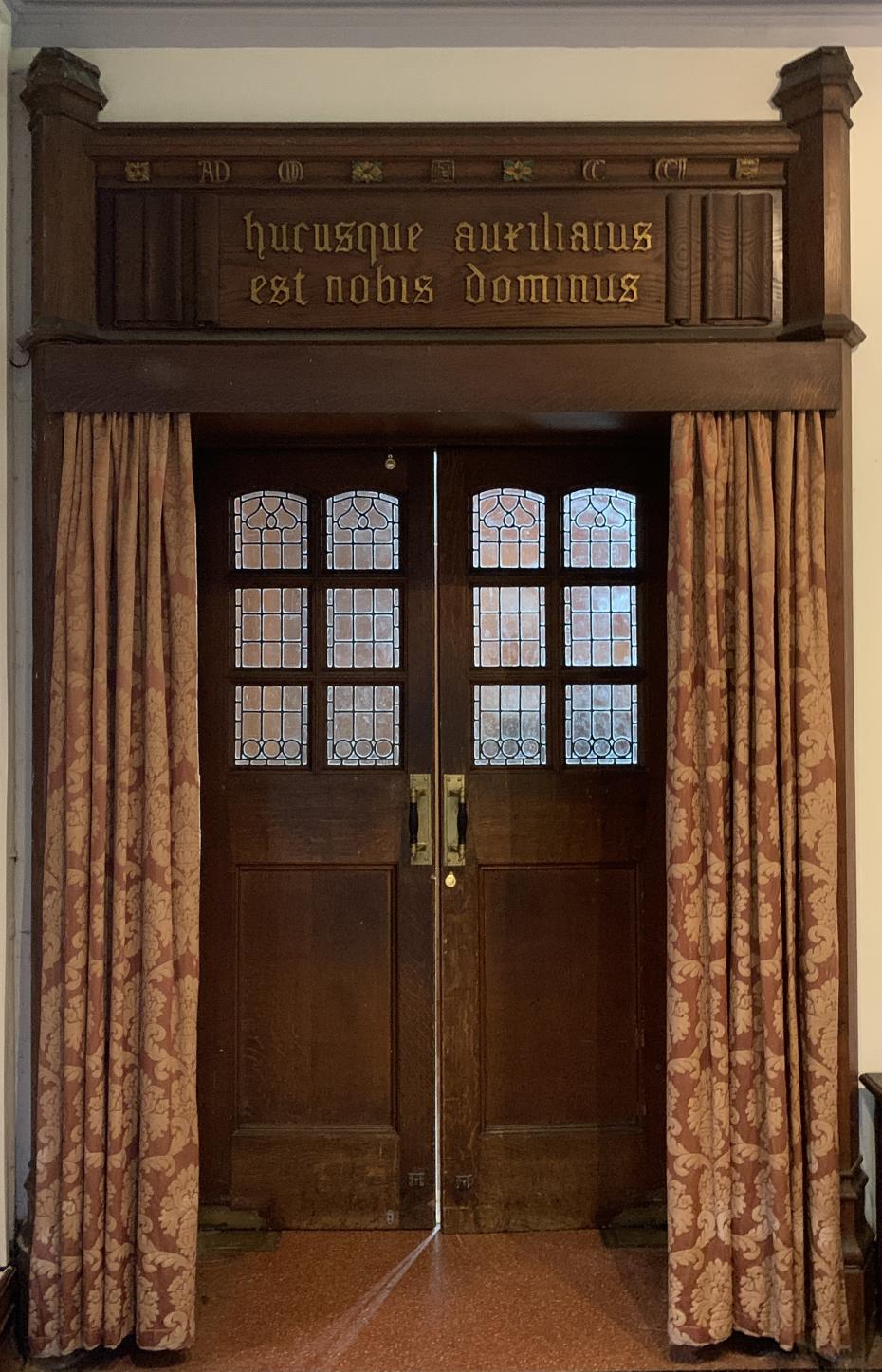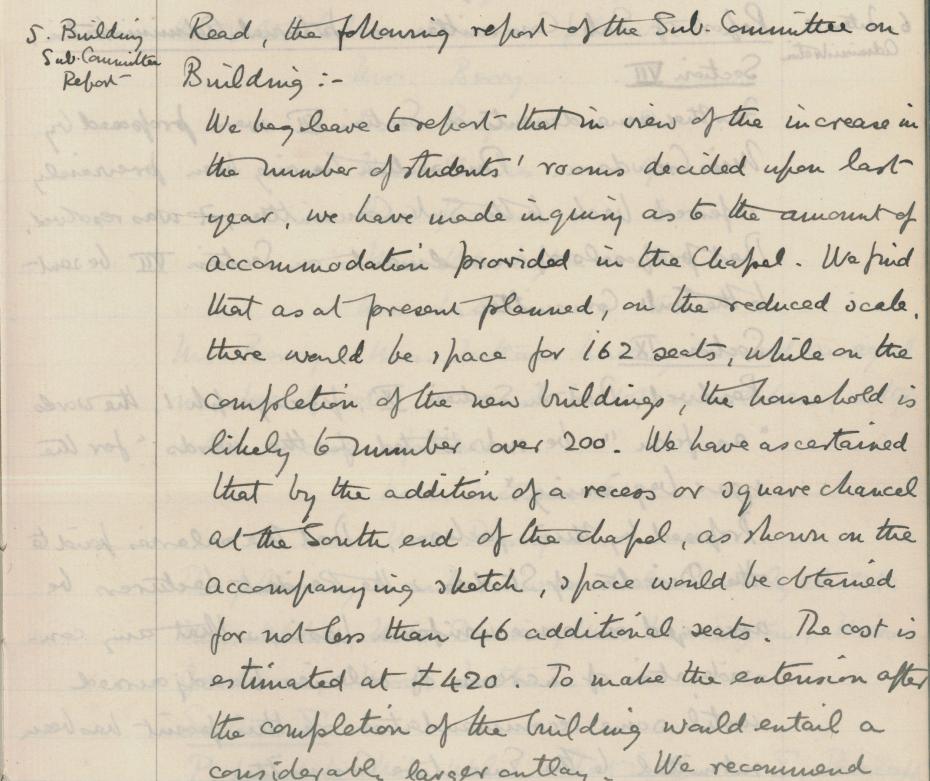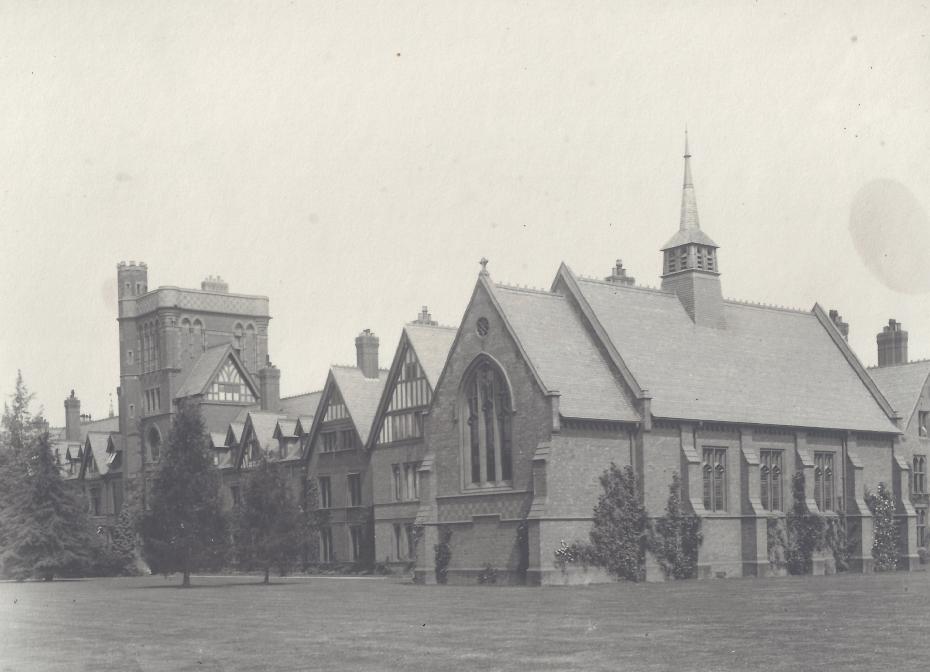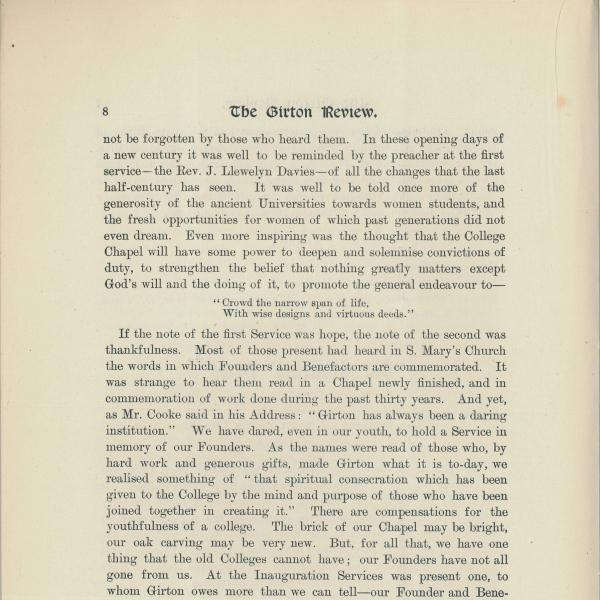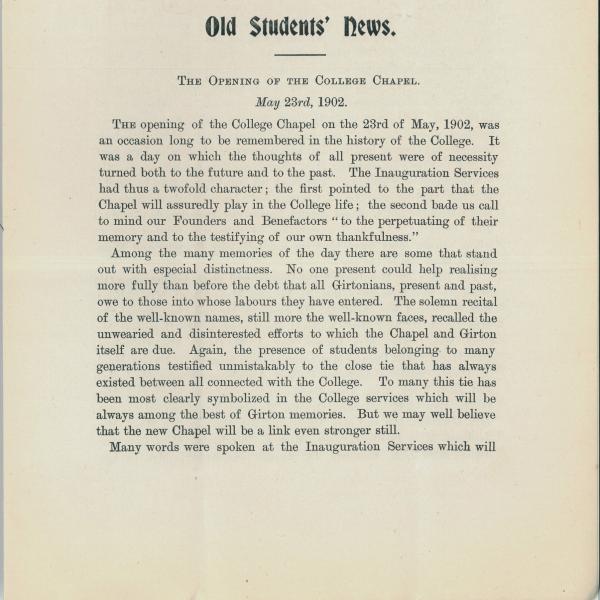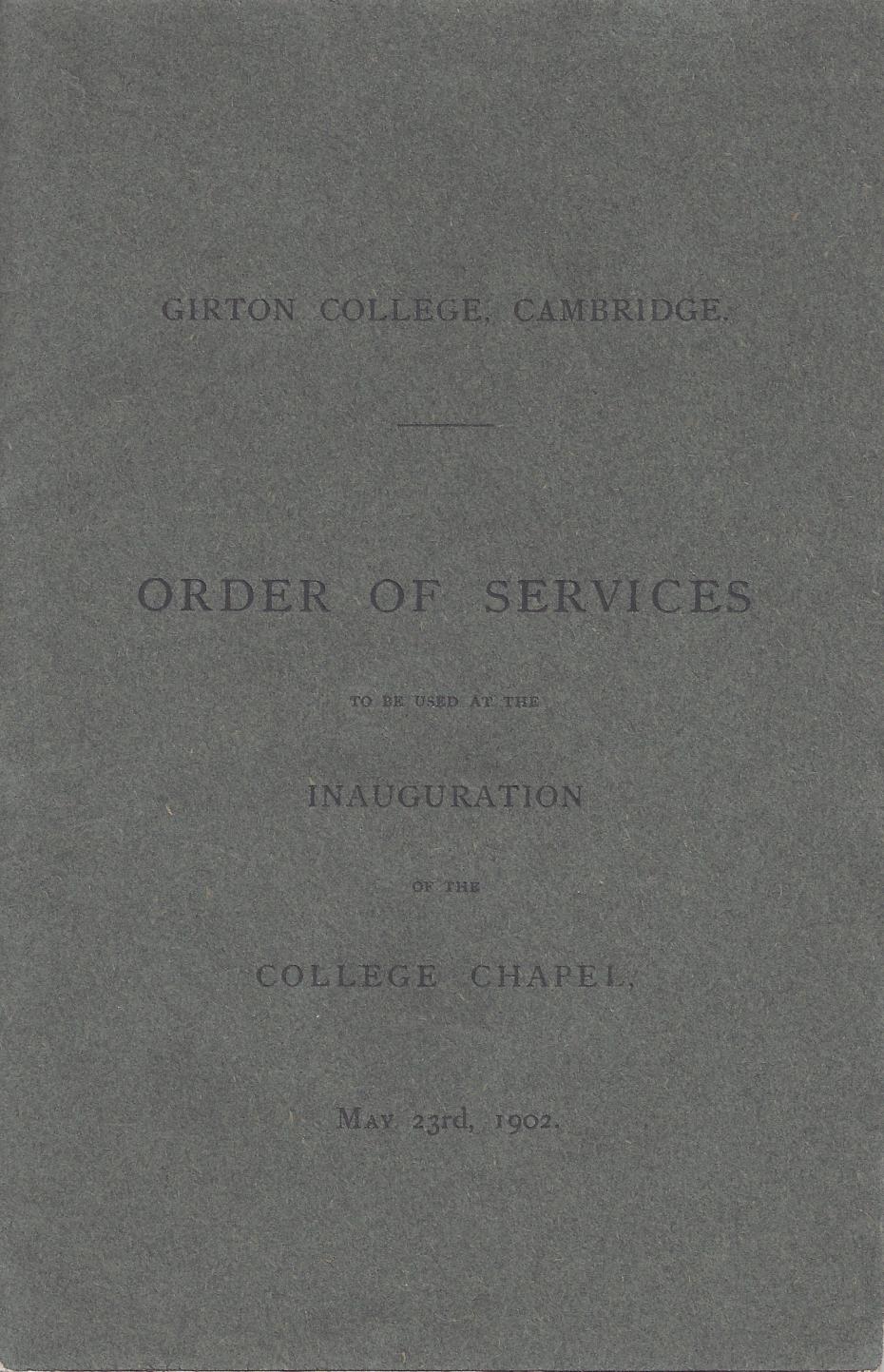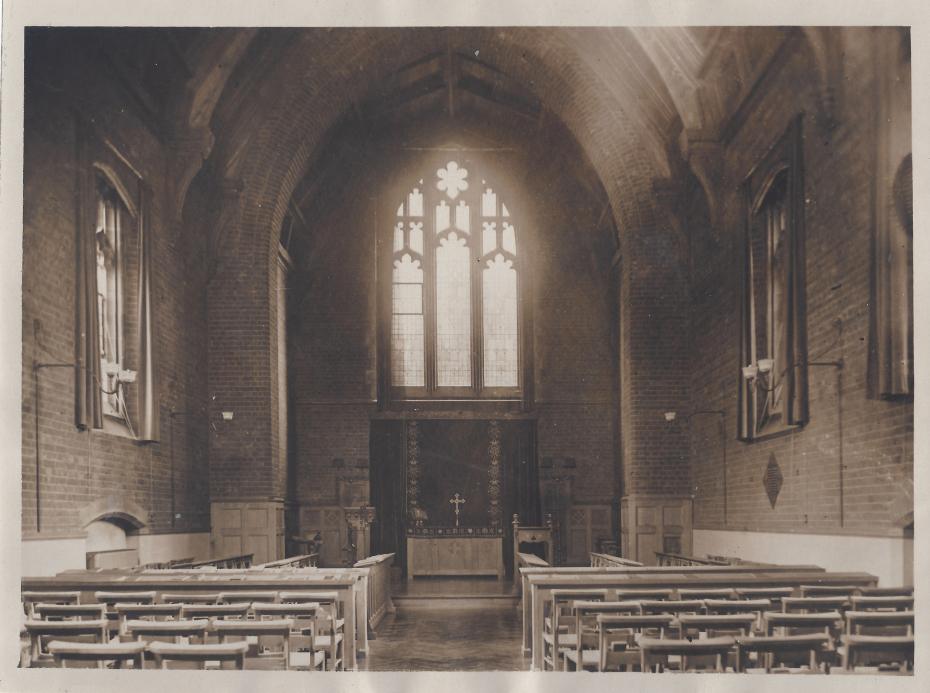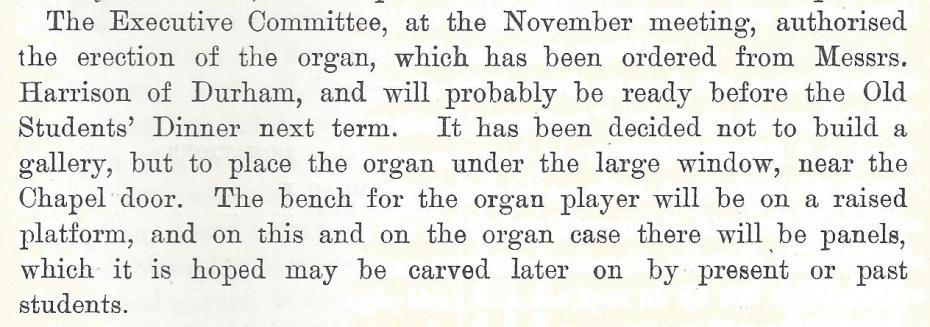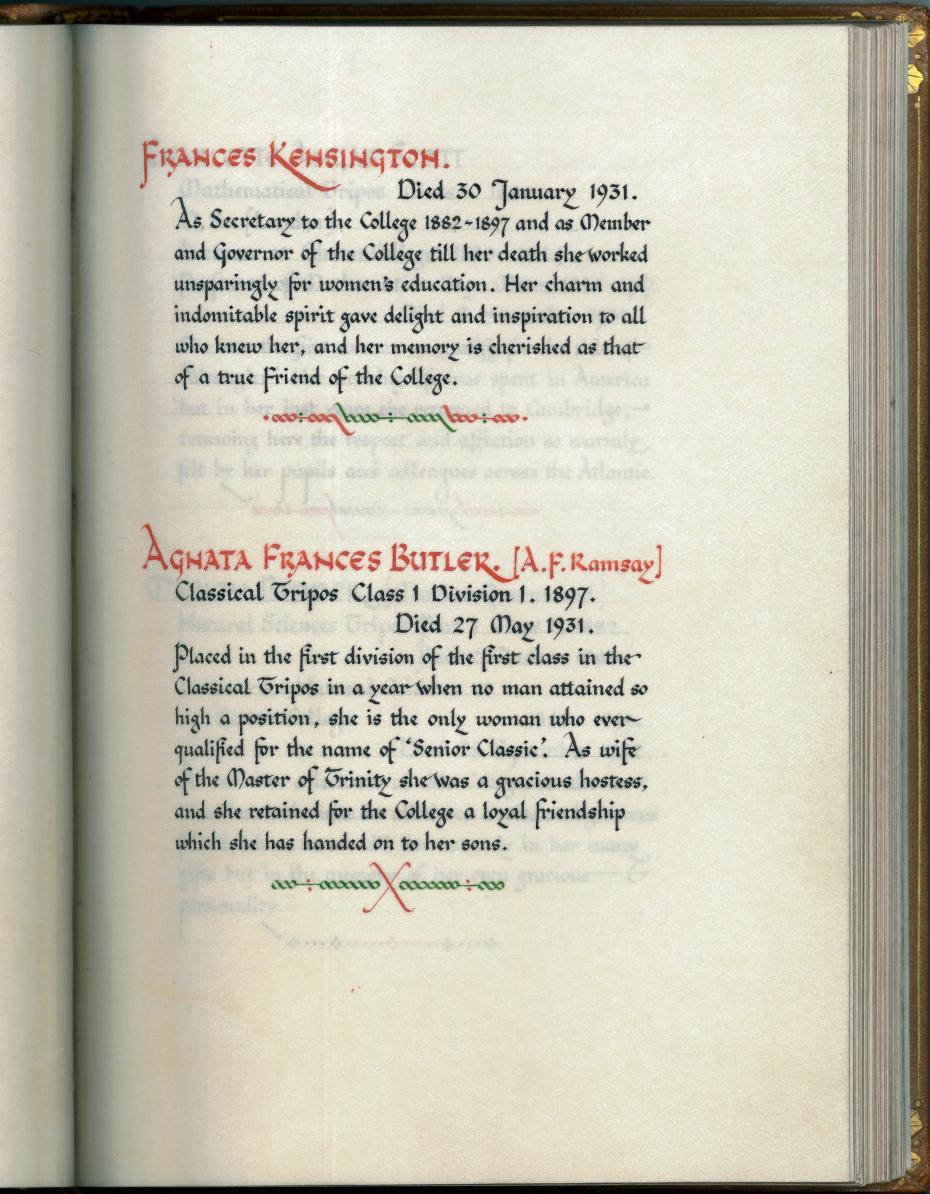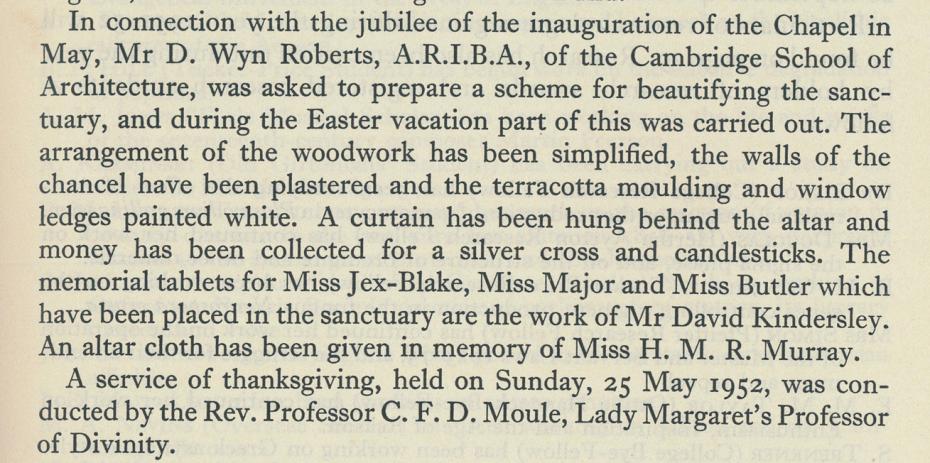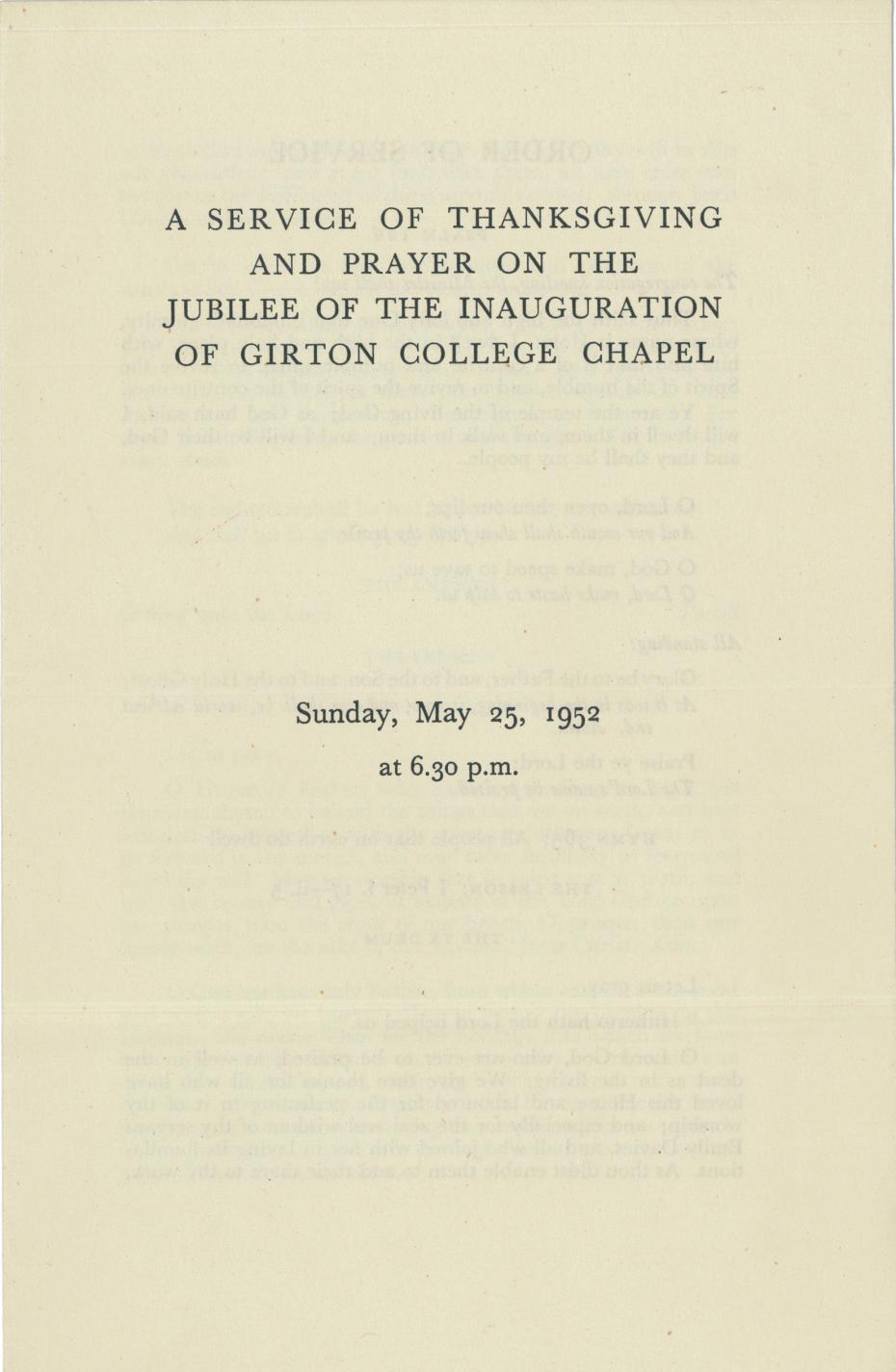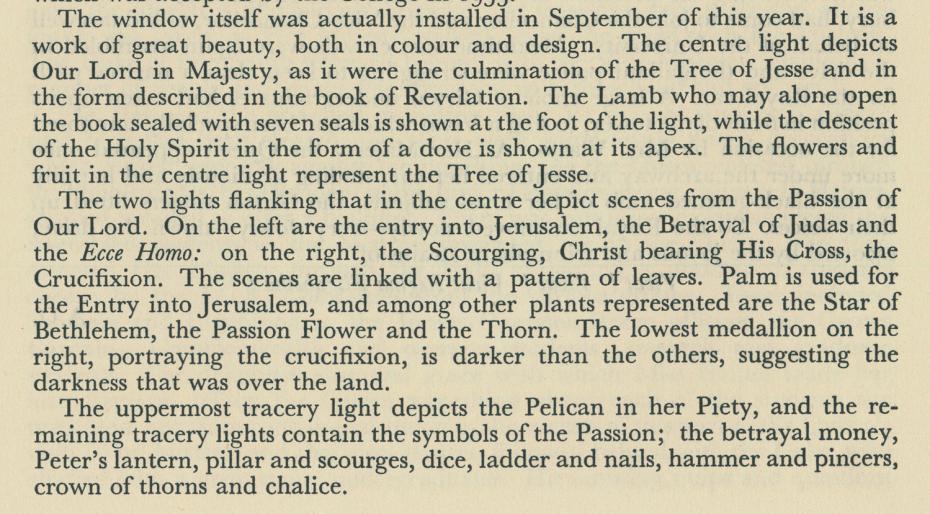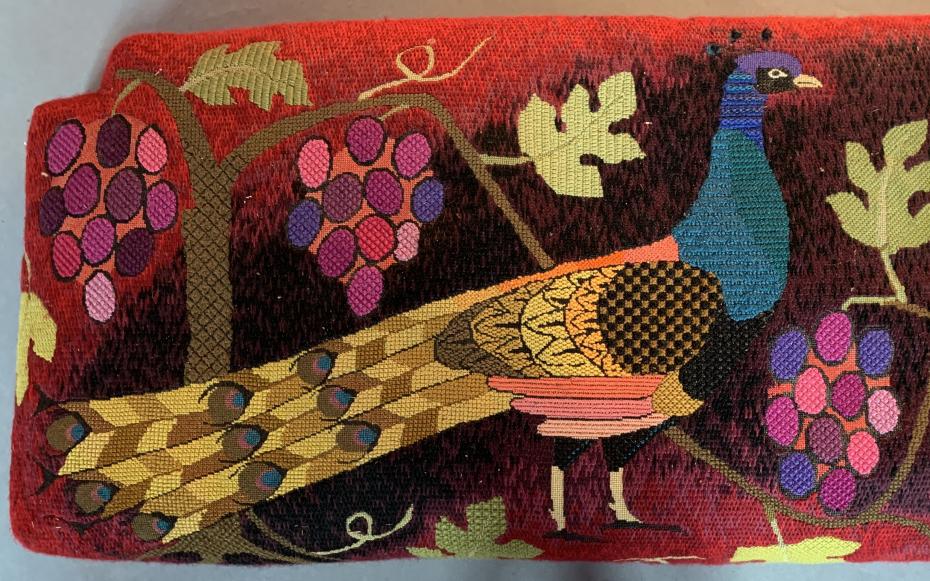The Inauguration
Girton College welcomes its new Chaplain, the Reverend Dr Tim Boniface, and invites the whole community to join our small group of representatives in the Chapel to witness his inauguration on Sunday 11 October at 5:30pm. It will be live-streamed on the Chapel's new YouTube Channel.
Details of this ceremony and tonight's evensong can be downloaded here.
When everyone has taken their seats and the Choir is assembled the Mistress welcomes the congregation, and asks Revd Dr Boniface the following inaugural questions:
Mistress: Will you care pastorally for this College community and all its members, of any faith or none?
Chaplain: With the help of God, I will.
Mistress: Will you uphold the tradition of inclusion, and foster the values of equality and diversity that are foundational to this College?
Chaplain: With the help of God, I will.
Mistress: Will you pray daily for God's blessing on this place and its people?
Chaplain: With the help of God, I will.
Inaugural prayers (Vice-Mistress)
Prayer for the new chaplain and his family
Loving God, hear us as we pray for Tim at the beginning of his ministry among us.
Enfold him in your love, that he may serve among us with compassion, faithfulness, humility and a zeal for justice.
Guide him as he opens the scriptures;
inspire him as he leads worship;
and grant him wisdom as he leads the life of this chapel community.
We pray also for your blessing upon his wife Beth and daughters Anastasia and Eloise, that with Tim they may know the welcome and richness of the community here at Girton, and flourish in their life together in Cambridge.
Through Jesus Christ our Lord,
All: Amen
A prayer for all of us at the beginning of this new stage of chapel life
Eternal God,
The light of the minds that know you,
The joy of the hearts that love you,
And the strength of the wills that serve you:
Grant us so to know you that we may truly love you,
So to love you that we may truly serve you,
Whose service is perfect freedom;
Through Jesus Christ our Lord,
All: Amen. After Augustine of Hippo (430)
The Mistress invites the Chaplain to take his place; he then welcomes students and commences Evensong.


